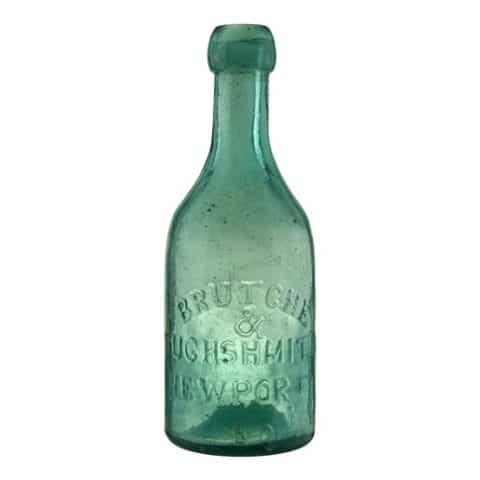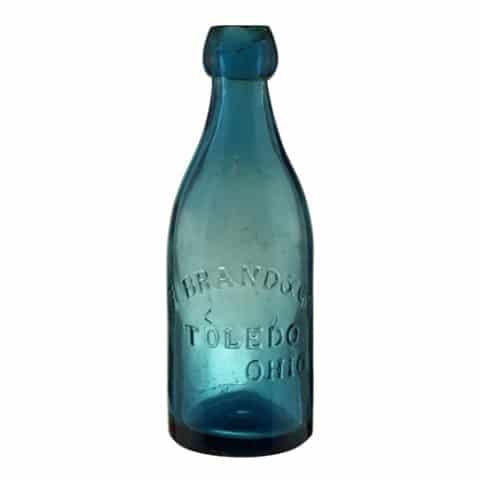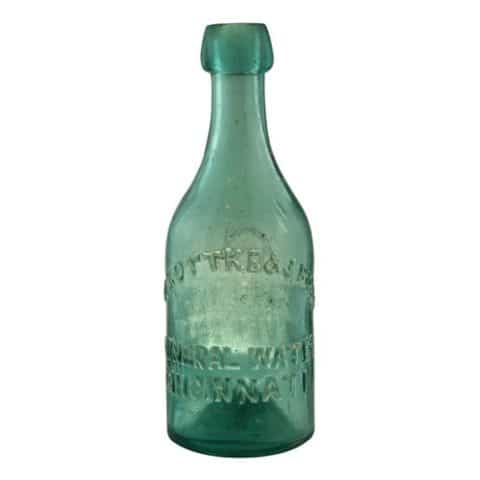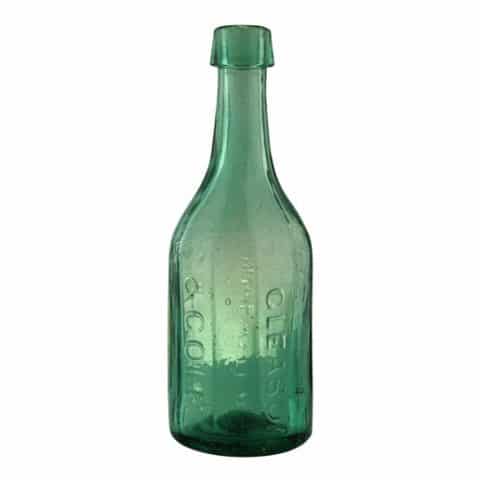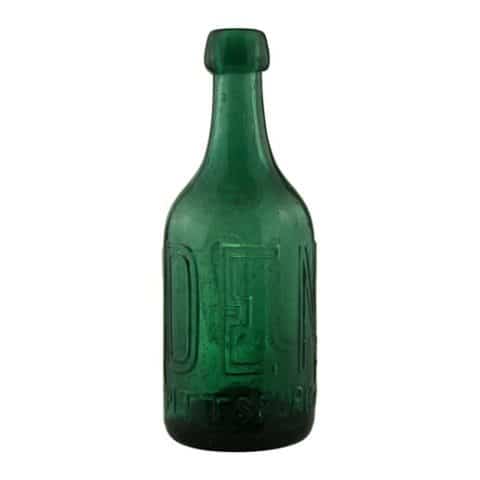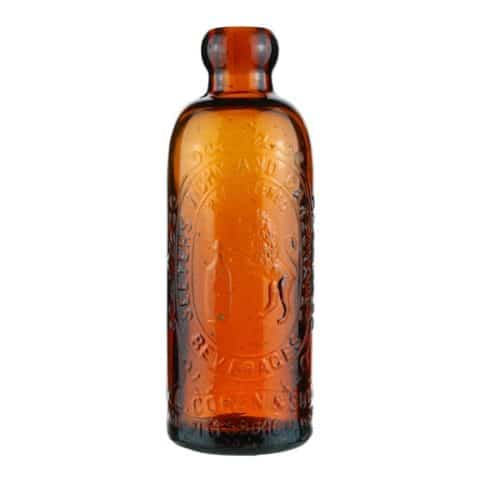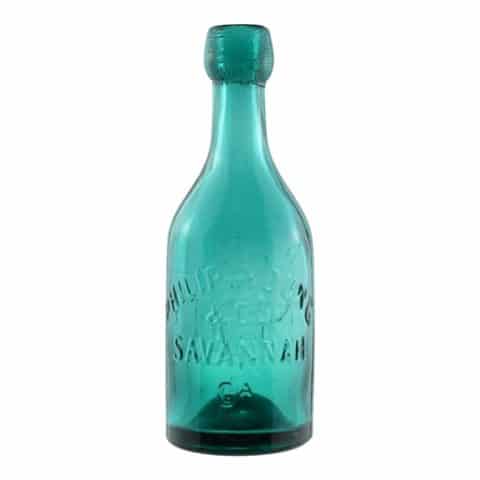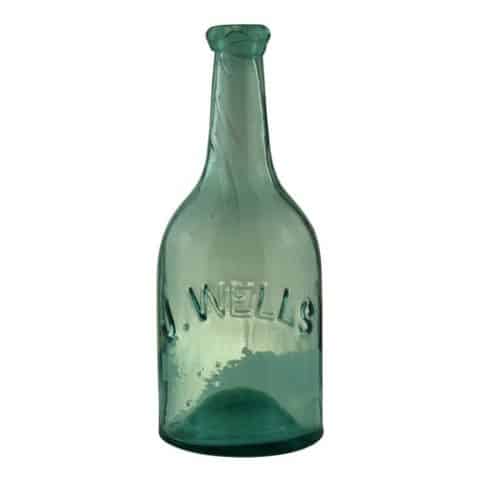San Jose Soda Wors. Cal.
San Jose
Soda Wors. (Works)
Cal.
Williams Bros., San Jose, California
Blue-Green Pony
Provenance: Lou Pellegrini Collection

In 1854, David and Thomas Williams comprised the Williams Bros. or W & W New Almaden. The brothers and their partner Daniel Winslow started California’s first aerated water bottling sourcing from the springs of New Almaden. In the spring of 1854, they bottled and delivered by wagon about one hundred dozen sodas per day to their customers who were found in the contiguous district and surrounding counties.

Nestled in a canyon eleven miles south of San Jose between the Pueblo Hills and the spurs of the Santa Cruz Mountains sits the tiny village of New Almaden which was once a world-famous quicksilver or mercury mining community. New Almaden would become the most prominent quicksilver mine in the Western Hemisphere under the operation of Quicksilver Mining Company.

In 1857, the Williams Bros. moved into the city of San José, and purchased the bottling apparatus of Gerricke & Leach who had the first establishment of the kind in town located on Santa Clara Street, on the site of the Knox Block. The brothers commenced the manufacture of soda-water located on St. John Street, between First and Market streets. This is when our subject San Jose Soda Works museum bottle was made.

Collectors like this early western soda because the mold maker missed adding the ‘K’ in ‘WORS’ resulting in a double-take when you read the embossed copy. On the face of the cylindrical pony style bottle, we see ‘SAN JOSE’ embossed in a transitional serifed typestyle. Beneath this is “SODA WORS’ on the second line. ‘CAL’ is embossed on the third line, flush right. There is an applied, rounded tapered mouth and an improved pontil.
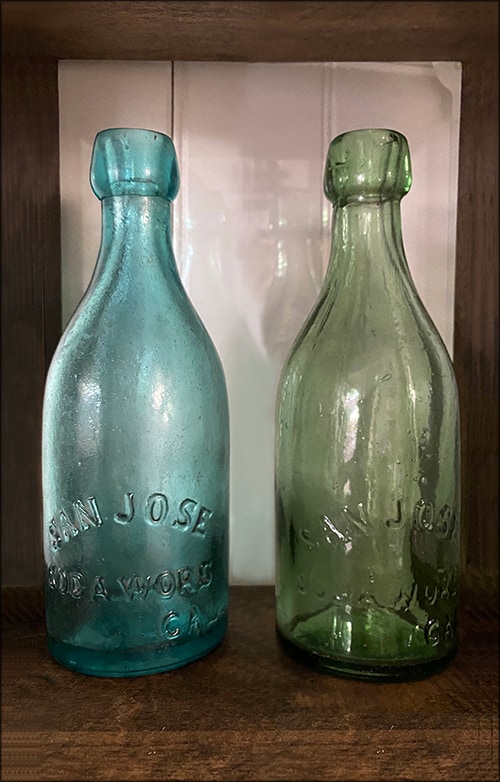
By 1865, the community of New Almaden was home to 1,800 residents and housed over 700 buildings, mostly miners’ residences. New Almaden contained three separate enclaves: the Hacienda, Spanishtown, and Englishtown. The Hacienda area was built along Alamitos Creek. The most prominent building in the Hacienda was Casa Grande, constructed in 1854 to 1855. This house was the mine manager’s residence. The Hacienda also contained the homes of additional management and furnace workers. A predominantly Mexican population of miners inhabited Spanishtown, New Almaden’s largest settlement. Early miners also included Californios and Chilenos. English miners from Cornwall began arriving in the 1860s and lived in Englishtown. Both Spanishtown and Englishtown had a mine office, school, company store, church, and doctor’s office. In the early 1870s to 1880s Chinese immigrants worked as miners, in the laundry, and as cooks.

From 1870 to 1880, while continuing to operate San Jose Soda Works, the Williams Brothers resumed bottling New Almaden Mineral Water, taking advantage of the upgrades to their original New Almaden facility. In the early 1890s, the Williams Brothers adopted a gravitating stopper bottle design. The brothers are associated with a distinguished line-up of bottles.

Support: Reference to 19th Century San Jose In a Bottle, Tobin Gilman, 2013
Primary Image: San Jose Soda Works bottles imaged by the FOHBC Virtual Museum west coast studio by Gina Pellegrini.
Support Image: Two examples of a San Jose Soda Wors (Works) Cal. bottle. – Lou Pellegrini collection.
Support Image: Two sides of an embossed ‘W & W New Almaden Mineral (spelled minl) Water’ bottle. – Holabird Western Americana Collections, LLC.
Support: Reference to The American Pontiled Soda Database Project, Tod von Mechow
Support: Reference to History of Santa Clara County, California, Alley, Bowen, & Company, 1881
Support: Reference to Neighborhoods of San Jose – New Almaden.
Support: Reference to Soda & Beer Bottles of North America, Tod von Mechow
Join the FOHBC: The Virtual Museum is a project of the Federation of Historical Bottle Collectors (FOHBC). To become a member.

















